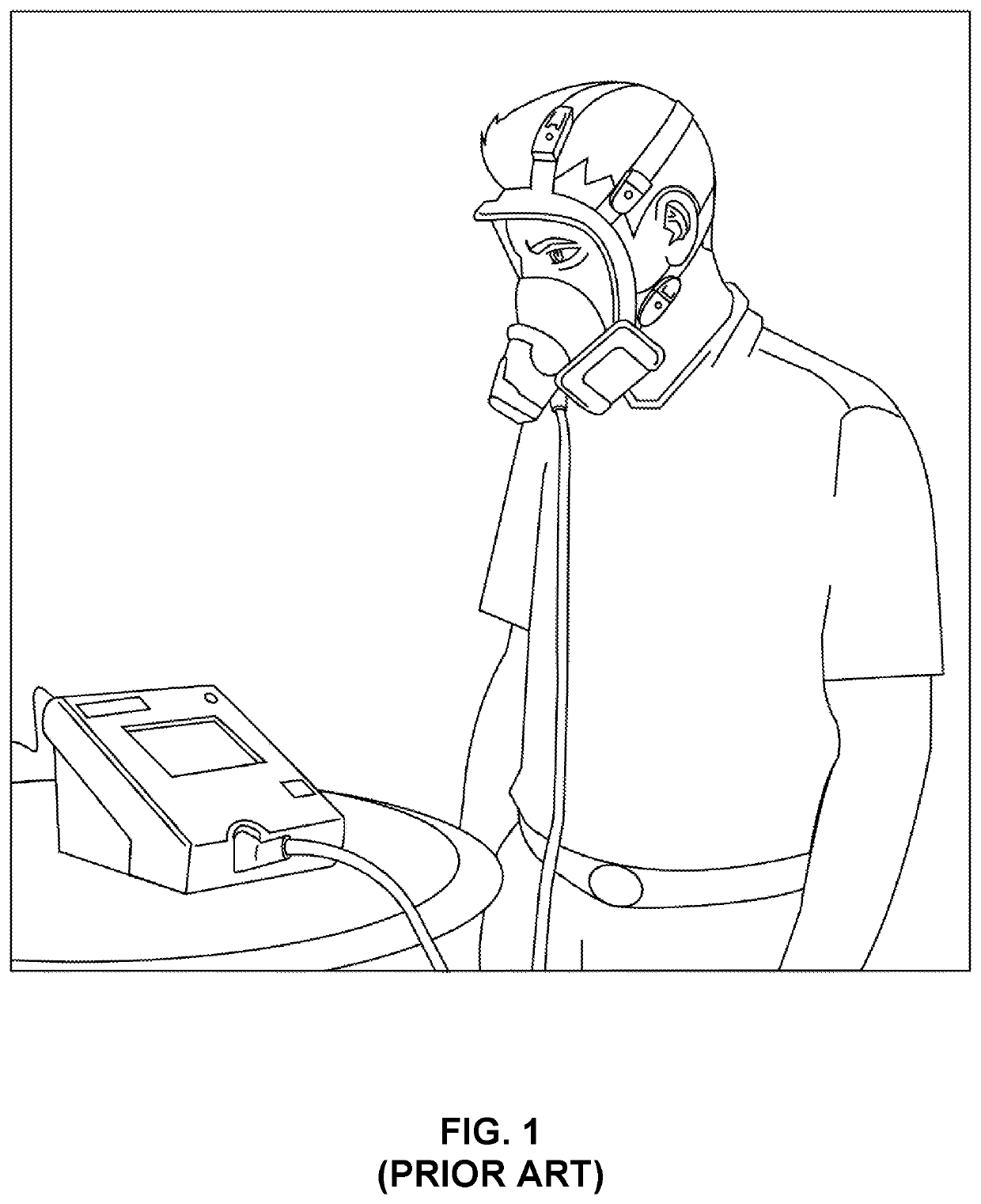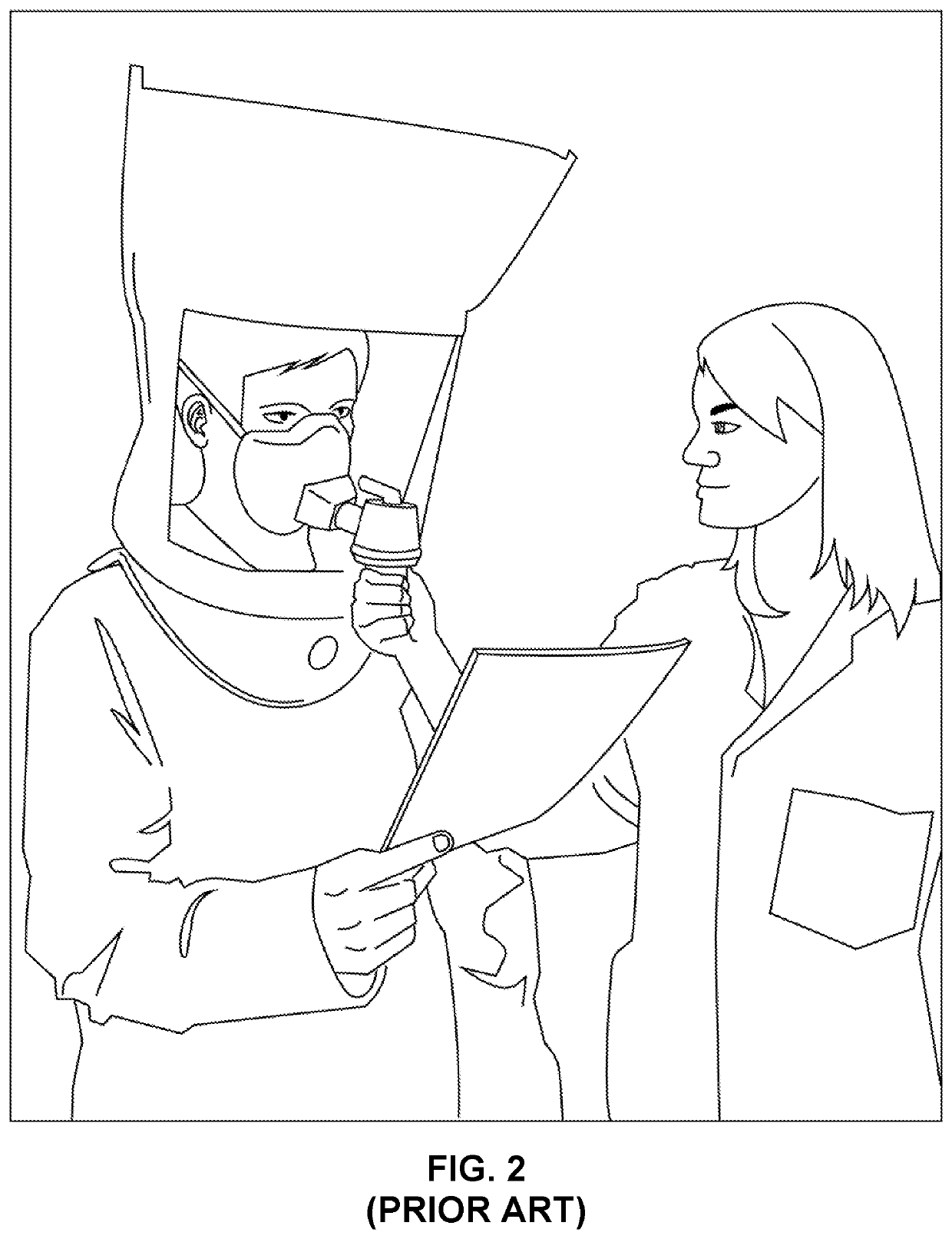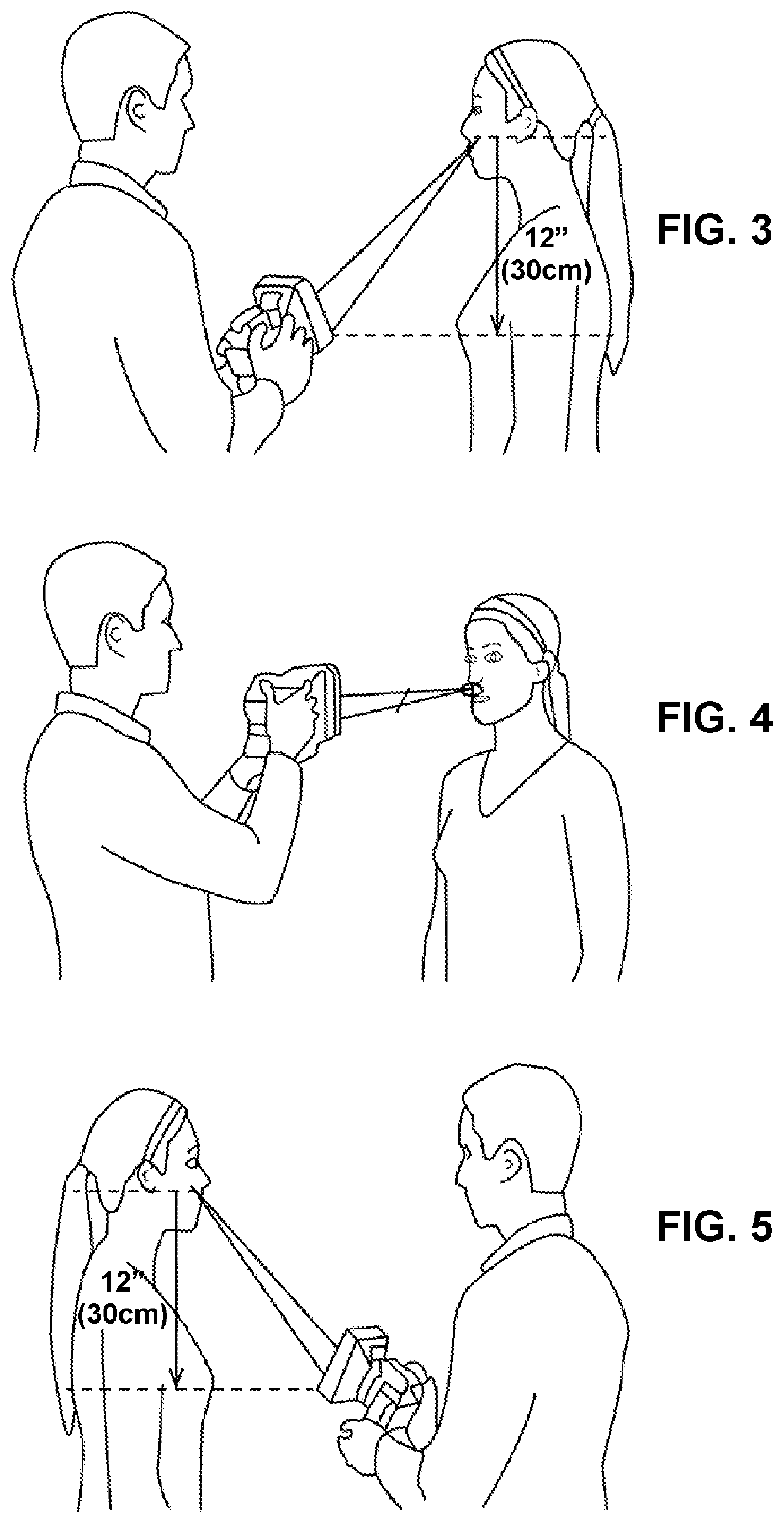Respirator fitting device and method
a technology of respirator and fitting device, which is applied in the field of computer-implemented software systems, image processing, image manipulation, and automated respirator fit testing, can solve the problems of large time it takes to perform the fit test, cumbersome nature of the fit test itself, and test susceptibility to seemingly innocent environmental conditions, so as to reduce the processing time of the fit test
- Summary
- Abstract
- Description
- Claims
- Application Information
AI Technical Summary
Benefits of technology
Problems solved by technology
Method used
Image
Examples
embodiment 1
2. The method of embodiment 1, further comprising determining, based on the differences between the corresponding facial features, facial dimensions, and / or facial locations on the face of the individual represented in the initial visit data and subsequent visit data, one or more rates of change for the corresponding facial features, facial dimensions, and / or facial locations on the face of the individual represented in the initial visit data and subsequent visit data.
embodiment 2
3. The method of embodiment 2, further comprising predicting, based on the one or more pre-defined ADs and the one or more rates of change for the corresponding facial features, facial dimensions, and / or facial locations on the face of the individual represented in the initial visit data and subsequent visit data, an expected failure date when differences between the corresponding facial features, facial dimensions, and / or facial locations on the face of the individual represented in the initial visit data and subsequent visit data will breach the one or more pre-defined ADs.
4. The method of any one of embodiments 1-3, further comprising obtaining weight information for the individual at the initial respirator mask fitting visit and the subsequent respirator mask fitting visit; determining a relationship between a weight of the individual and the differences between the corresponding facial features, facial dimensions, and / or facial locations on the face of the individual represente...
embodiment 5
6. The method of embodiment 5, wherein NIOSH Headform Categories include small, medium, large, long / narrow, and short / wide.
7. The method of any of embodiments 1-6, further comprising determining a recommended respirator mask manufacturer and / or model for the individual based on the initial visit data, the subsequent visit data, and / or the differences between the corresponding facial features, facial dimensions, and / or facial locations on the face of the individual represented in the initial visit data and subsequent visit data.
8. The method of any of embodiments 1-7, further comprising obtaining demographic information for the individual at the initial respirator mask fitting visit and / or the subsequent respirator mask fitting visit, the demographic information comprising one or more of geographical information about a location of the individual, racial information about the individual, information about a gender of the individual, information about an industry where the individual ...
PUM
 Login to View More
Login to View More Abstract
Description
Claims
Application Information
 Login to View More
Login to View More - R&D
- Intellectual Property
- Life Sciences
- Materials
- Tech Scout
- Unparalleled Data Quality
- Higher Quality Content
- 60% Fewer Hallucinations
Browse by: Latest US Patents, China's latest patents, Technical Efficacy Thesaurus, Application Domain, Technology Topic, Popular Technical Reports.
© 2025 PatSnap. All rights reserved.Legal|Privacy policy|Modern Slavery Act Transparency Statement|Sitemap|About US| Contact US: help@patsnap.com



